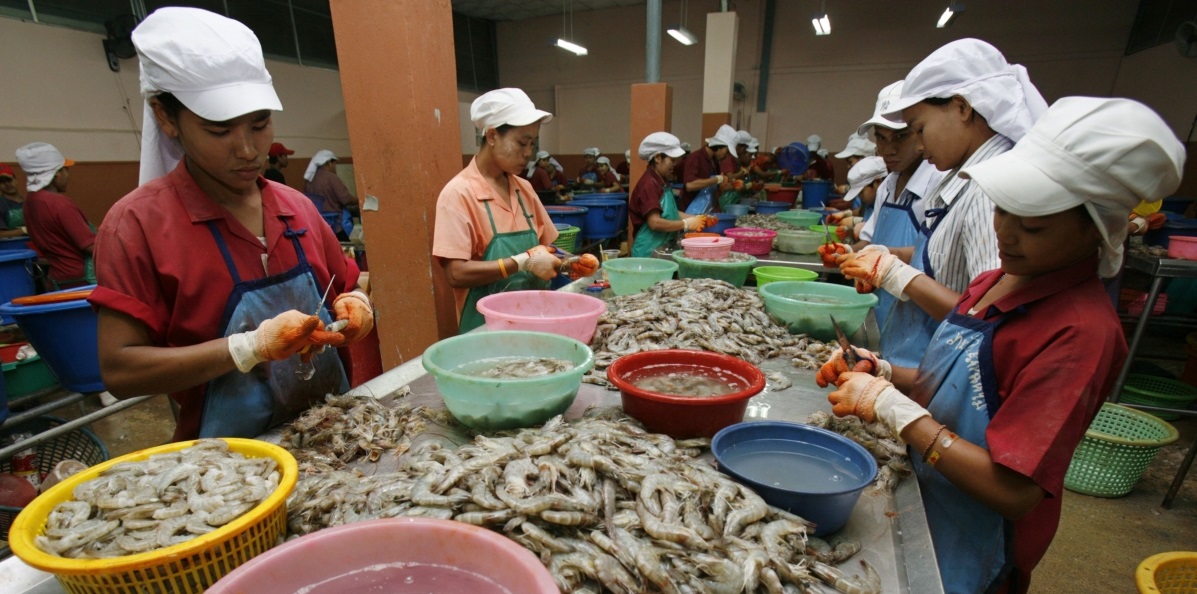Thai fisheries industry is of vital importance to Thailand’s economy. Thailand is one of the world’s top ten fishing nations in terms of total catch. According to FAO , Thailand ranked third (behind China and Norway) in 2010 in the top-ten exporters of fish and fisheries products, with a value of US$7 billion (up from US$4 billion in 2000) Tuna, shrimp and fish are the major fishery products exported. Recently, global attention has focused on labour conditions in the fisheries industry, which includes fishing, aquamarine farming, primary processing, and packing/processing for local and export markets related industries. The fisheries industry is characterized by high use of migrant workers, many of whom lack legal status and have entered Thailand through informal brokerage arrangements including being smuggled. Reports on incidents of child labour, forced labour, discrimination, trafficking in persons and generally gaps in working conditions regularly surface in the media, indicating a need to address labour protection in the industry. Child labour in the shrimp and seafood production value chain has been identified in small-scale informal enterprises that engage in primary processing (i.e. sorting, peeling, and deveining shrimp). The employment of children in the other industry supply chain’s, both under and above the legal working age, in hazardous working conditions is also witnessed ranging from children’s employment in fishing industry, working at fish docks and markets, at aquamarine farms, at informal small processing businesses other than shrimp and also in larger packing and processing factories. One-third of migrant children in the shrimp and seafood industries do not attend school, due to a combination of challenges and constraints that include household debt, childcare commitment for siblings, and parental mobility. While all children in Thailand have access to education, regardless of their registration status, the children of undocumented migrants were less likely to enroll in school, with low incomes leaving families less able to meet the supplementary expenses involved. The research suggests that migrant parents who believed they would remain in Thailand for an extended period were more likely to send their children to school.

Slavery in Thailand's shrimp processing areas
Are there any efforts to prevent this?
The Thai government has introduced some reforms and new laws to address trafficking and forced labour, but the ILO report emphasises that not enough has been done. It points to gaps in the country’s legal framework and enforcement, in particular in the regulation of brokers who recruit workers, the prosecution of corrupt officials, and the effective inspection of vessels. An new study by the International Labour Organisation reveals the vulnerability of child labourers in Thai seafood industry. Also this report discusses child labour specifically with relation to the Thai shrimp industry.
How you can help?
Download this app to empower yourself with knowledge about child labout and trafficking. Moreover, use the following guidelines when buying shrimp.
Consumers of shrimps and shrimp-based products are accustomed to low prices. Frequently they do not know about exploitative working conditions and low environmental standards. So read trhou the following:
- Customers should make clear that they do not want to eat shrimps whose production has damaged the environment and violated human rights, even if this means paying higher prices.
- Customers should ask retailers and restaurants, for instance on their websites and social media, about the origin and the production standards of all shrimp sold and served.
- Consumers should demand the introduction of binding laws from their governments concerning the responsibility of companies for human rights abuses across their value chain.
Watch this video!
Slavery at sea